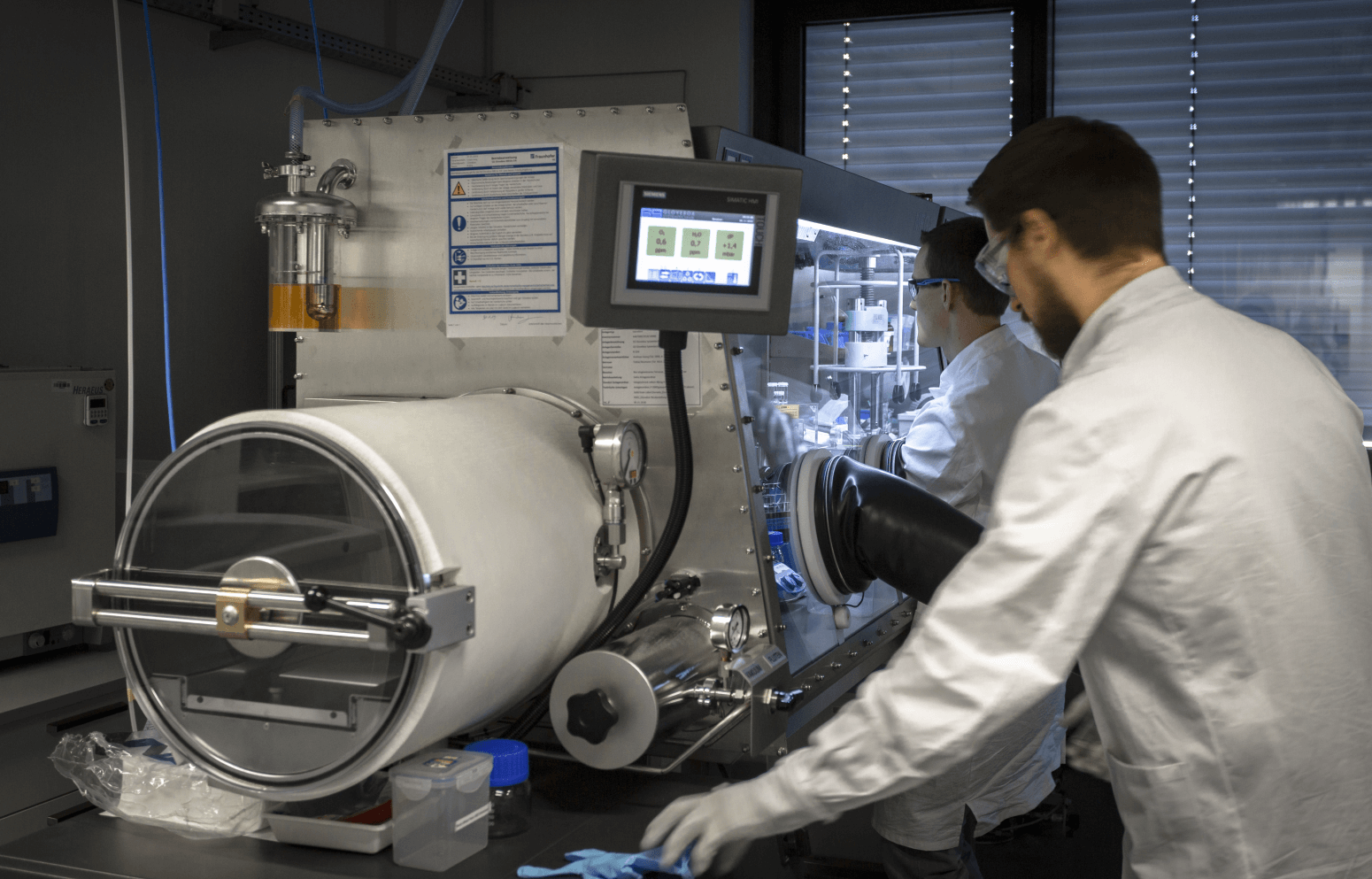| Duration: | 09/2020 - 08/2022 |
| Contracting Authority/ Sponsors: |
Vector Stiftung |
| Project Focus: |
NESSI – Novel Si Anodes for Solid-State Lithium-Ion Batteries
There is a fundamental risk of "thermal runaway" with conventional lithium-ion batteries due to the use of liquid electrolytes. Consequently, switching to solid electrolytes substantially increases the safety of lithium-ion batteries. In order to also increase the energy density, efforts are being made to use lithium metal for the anode. However, this still requires a great deal of further development. Silicon, which is being intensively researched for batteries with liquid electrolytes, offers the potential to increase energy density compared to conventional anode materials (graphite). Within the framework of NESSI, a silicon-based anode is to be combined with a sulfide-type solid-state electrolyte.
As an anode material for lithium-ion batteries, silicon offers comparatively high capacities. The (volumetric) energy density can be substantially increased, for example, by replacing the currently common anode material graphite with silicon-based materials. This represents an intermediate step to the use of lithium metal anodes, which would allow a further increase in energy density.
It is expected that there is still some research and development work to be done before lithium can, on a large scale - even at low temperatures - be used as an anode in combination with solid ionic conductors with sufficiently high ionic conductivity. The use of silicon-based anodes can represent very valuable intermediate technological steps here.
However, specific problems must be solved that are associated with the use of silicon as anode material. One particular problem involves the high volume change of the silicon during battery charging and discharging.
In this project, innovative approaches are being pursued to combine silicon materials with sulfidic solid electrolytes. This involves embedding silicon-based particles within a matrix of solid ionic conductor. The use of sulfide-based ionic conductors allows the production of so-called "all-solid-state" batteries in printing processes similar to those currently used for the production of lithium-ion batteries.
The "NESSI" research project aims to demonstrate the principal feasibility of such a process.
